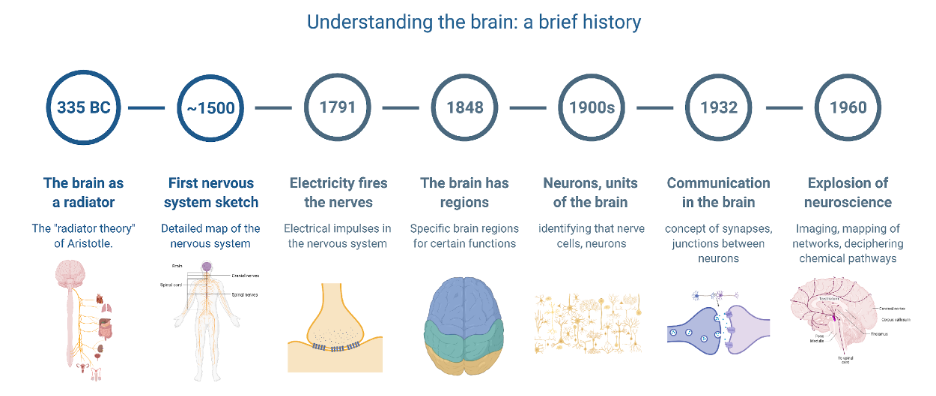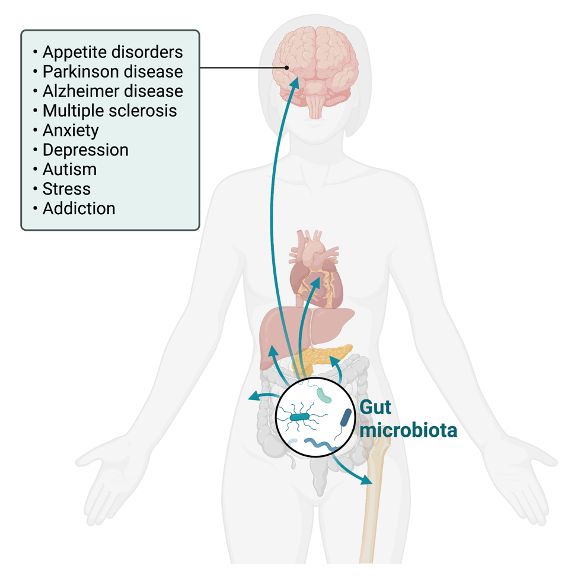
The human brain weighs about 1.4 kilograms and houses the Central Nervous System (CNS), which contains 86 billion neurons and 85 billion non-neuronal cells. Among its many functions, the brain is known to process, integrate, and coordinate information from the senses. The brain consists of three main parts: the cerebrum, the brainstem, and the cerebellum. The cerebrum, the largest part of the brain, is connected to the brainstem, which in turn is connected to the spinal cord.
The brain is further divided into two hemispheres: the left, which controls language and speech; and the right, which controls visual and spatial information interpretations. The hemispheres are bound by the corpus callosum, a region comprising a large collection of nerve fibers, allowing both hemispheres to communicate with each other effectively.
There are four lobes in each hemisphere: frontal, temporal, parietal, and occipital. Cognitive functions and voluntary movements are controlled by the frontal lobe, while hearing, and other primary auditory perceptions, occur in the temporal lobe. Moreover, sensory and motor information are processed by the parietal lobe, and the occipital lobe interprets visual information. (Figure 1)

Figure 1: Brain lobes and functions. Major neurodegenerative diseases and neurodevelopmental/neuropsychiatry disorders.
The human brain is one of the most complex entities known to us. There are 100 trillion possible connections between neurons, a phenomenon that surpasses the quantity of stars in our galaxy [1, 2]. Thus, disorders of the brain, and their associated treatments, are complex. Fortunately, research and medical investigations have contributed substantially to our growing understanding of such complexities. Basic research has paved an understanding of how disorders originate and manifest themselves. Importantly, basic research focuses on dissecting the intricacies of the system before embarking on ways to fix it. As recently as the nineteenth century, little was known about the fine structure of the brain. Neuroscience or brain research is relatively new, with in-depth investigations developed within the last century (Figure 2) [3].

Figure 2: A brief history of brain research.
Brain disorders fall into two general categories: neurodegenerative diseases and neurodevelopmental disorders (Figure 1). Although neither of these conditions are easy to understand or treat, there are some treatments that can alleviate or suppress symptoms in certain disease states.
Neurodegenerative disorders are characterized by the progressive loss of neurons that affects the Peripheral Nervous System as well as the Central Nervous System. Parkinson's disease, Huntington's disease, Alzheimer's disease, multiple sclerosis, Friedreich ataxia, and spinal muscular atrophy are the most common neurodegenerative diseases. Both physical and mental activities of the human body are affected by these diseases including movement, speech, memory, intelligence, and coordination. Because the symptoms of these diseases are similar, their causes are not well understood.
While much work still needs to be done to fully understand these diseases, it is suspected that neurodevelopmental and neuropsychiatric disorders are associated with both genetic and environmental causes. Moreover, neuropsychiatric disorders can arise as a result of improper brain functioning, due to lesions that disfigure the brain.
The onset of these disorders generally occurs during childhood or early adulthood. Individuals with psychiatric disorders suffer adverse health effects, and their overall well-being is negatively affected. Psychiatric disorders can impair learning (in childhood) and concentration (in adulthood). It is also important to note that several of the observed symptoms related to these disorders transcend across a variety of psychiatric cases, creating difficulties in truly understanding an individual psychiatric case. Some of these overlapping conditions include autism, attention deficit hyperactivity disorder (ADHD), epilepsy, aggression, and cognitive impairment.
More recently, considerations of the influence of the microbiota inside the gut have shed light on our understanding of brain and central nervous system disorders. Moods, decisions, and behavior are not solely determined by the brain. Gut-brain axis, the imaginary axis linking the brain to the gut, is one of the frontiers of neuroscience (Figure 3).
The microbiota in our gut is sometimes referred to as the second genome and second brain. Unlike inherited genes, this second genome can be reshaped and cultivated. There is an increasing awareness of how diet and nutrition affect health. Although our brain contains billions of neurons, we are less likely to acknowledge the presence of trillions of "good" bacteria in our intestinal tracts. It has been suggested that these naturally occurring, ever-present commensal bacteria play a significant role in our brain development: how we behave, how we respond to stress, and how we respond to treatments for depression and anxiety. [4, 5]

Figure 3: The Second Brain: Gut microbiota and brain disorders.
The Neurological Disorders Research Center (NDRC) at the Qatar Biomedical Research Institute (QBRI) pioneers neuroscience research in Qatar and the region, addressing neurological disorders that have a significant impact on Qatar, as well as those that are prevalent in the country. The NDRC aims to substantially accelerate the pace of therapeutic development utilizing cutting-edge technologies, including experimental disease modeling, biomarker analysis, gene therapy, and stem cell biology. Areas of research within the NDRC include:
- Neurodegenerative diseases and dementia, such as Alzheimer's disease and Parkinson's disease - providing insights into the mechanisms of these diseases as well as preclinical models.
- Neurodevelopmental disorders such as autism spectrum disorders (ASD) and other psychiatric conditions, intellectual disability (ID), epilepsy and ADHD - preclinical models and insights into the mechanisms underlying neuropsychiatric disorders
- Stem cell biology and neurodevelopment - the emergent developments in stem cell biology, neural differentiation and brain organoids are changing the way we view and study, neurodevelopment, representing a new interface between technology and biology.
Authors: Dr. Salam Salloum-Asfar (Postdoctoral Researcher) , Rowaida Z. Taha (Research Associate, QBRI), Dr. Sara A. Abdulla (Research Fellow).
Editors: Dr. Adviti Naik (Postdoctoral Researcher, QBRI), Dr. Prasanna Kolatkar (Senior Scientist, QBRI)
Arabic text validation: Rowaida Z. Taha (Research Associate)
For references, please click here.









